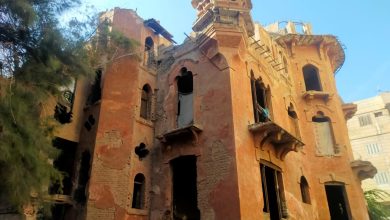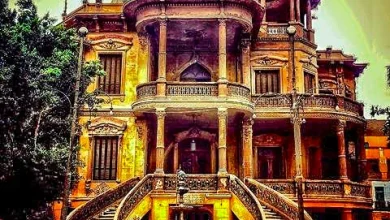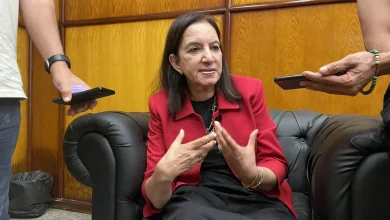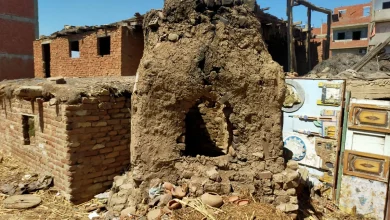
Theater never dies… Mansoura saves its heritage and restores it as an opera house
Not everything that is demolished collapses. Some buildings remain, even if they are destroyed, simply because they carry the memory of a city and the dreams of generations. There, in the heart of Republic Street, amid the hustle and bustle of daily traffic, stands the Mansoura National Theater, a silent witness to a long battle between oblivion and survival.
An elegant building despite its age, it has seen the passage of time as great stories do: rise, glory, neglect, and then a return from the rubble. Here, Umm Kulthum sang, here it was damaged by a loud explosion, and here people said, “The dream will not be destroyed.” It is not just a building made of stone, but a story of resistance that lasted 12 years, involving engineers, intellectuals, and dreamers. Until the theater came back to life, with a new face and an old spirit that will never die.

The birth of the Mansoura National Theater from the heart of the palace
The theater was not just a building, but was born from the womb of a “palace” that belonged to Amina Hanim El-Ilhamy, wife of Khedive Tawfiq. At the end of the 19th century, Mansoura was a city adorned with European ideas and pulsating with the arts, so it was only natural that a space should be set aside for ballet, music, and theatrical performances.
The theater has been listed as a heritage building for decades and enjoys legal protection that confirms its architectural and historical importance. In 1902, Italian architect Marelli came to convert the palace into a municipal building and arts space, with a luxurious Italian design and a capacity of approximately 650 seats. The Mansoura National Theater quickly became a shining cultural landmark in the Egyptian Delta.
Here, Umm Kulthum sang, Youssef Wahbi performed, and the first plays by Al-Rihani and Ali Al-Kassar were staged. Here, people laughed, cried, applauded, and left with art in their hearts.Mansoura National Theater
The theater between glory and neglect
Throughout the first decades of the 20th century, the theater remained a strong cultural force. However, with the political and economic changes that followed the July Revolution, its luster began to fade, especially after the advent of television and the absence of stable support for theater in the provinces.
By the early 1990s, the theater entered a period of semi-permanent closure, sometimes under the pretext of “renovation” and other times under the pretext of “maintenance,” until opening its doors became a rare event. It was sometimes used as a temporary hall for provincial celebrations or soulless concerts.
The theater was closed more than it was open, dust covered the red curtains, and those interested in it became a small group of intellectuals who wrote about it sadly and demanded its reopening in letters that were never read.
On the morning of December 24, 2013, a huge explosion rocked the Dakahlia Security Directorate, located directly adjacent to the theater. People were killed and injured, and parts of nearby buildings collapsed. The theater was not the target, but it was hit, its facade damaged, its windows shattered, and some of its interior walls damaged. Moments later, officials made a quick decision: “The theater is about to collapse… It will be demolished.” It was as if the story had ended.
The decision to demolish and the outbreak of anger
When news of the demolition spread, the scene was anything but normal. Intellectuals were shocked, artists were angry, and social media pages were ablaze. Could one of Egypt’s oldest theaters be demolished so easily?
Photos showing “demolition” signs on the theater walls sparked a widespread campaign in its defense. Some cultural groups in Mansoura launched an online campaign called “Save Mansoura.”
But in fact, the “Save Mansoura” campaign had already been launched in October 2013, before the explosion, with the aim of protecting the city’s cultural heritage and architecture, and the theater was its most prominent symbol after the explosion.Mansoura Theater

The Mansoura Theater: An indelible legacy
In mid-2014, after the uproar, the Ministry of Culture intervened. With indirect financial support from the Sultanate of Oman (worth 3 million Omani rials), the theater was included in the “Cultural Development Fund” projects, but the project faced several delays.
Years passed, with announcements of the start of restoration work, followed by further delays, until many felt that the theatre was being used more for propaganda than as a serious project. The theatre remained standing, lifeless, waiting for its first actor to step onto the stage for more than 20 years.
In late 2021, with renewed talk of reviving the cultural center, the Egyptian Opera House took over full responsibility for the project. The Arab Contractors Company was commissioned to carry out the work, in coordination with the Ministry of Housing, the Dakahlia Governorate, and Mansoura University.
Mansoura Opera House
During the restoration and development, the new name was officially adopted as “Mansoura Opera House,” as a step towards renewing its artistic identity and affirming its role as a regional cultural center that revives heritage and keeps pace with modernity.
Over the course of two years, structural reinforcement work was carried out, the Italian roof was restored, and the doors and windows were rebuilt in accordance with the original design. Starting in 2024, work began on the final finishes and technical equipment at the recommendation of the Council of Ministers.
Under the constant monitoring of the “Save Mansoura” campaign, which has been publishing updates from the work site and analyzing contracts, its founder, Dr. Muhannad Foda, said: “My personal dream is to attend the opening of the Mansoura Opera House… Not for the photo op, but because I want to believe that the effort we started 12 years ago has not been wasted.”

What’s next?
So far, no official opening date has been set, but all indications confirm that the theater will be ready before the end of 2025, with plans to revive it as a cultural beacon, combining authentic Italian heritage with modern facilities, so that the Mansoura National Theater can once again become a center for the arts in the Delta.





Hi, this is a comment.
To get started with moderating, editing, and deleting comments, please visit the Comments screen in the dashboard.
I don’t think the title of your article matches the content lol. Just kidding, mainly because I had some doubts after reading the article. https://accounts.binance.info/zh-TC/register-person?ref=DCKLL1YD